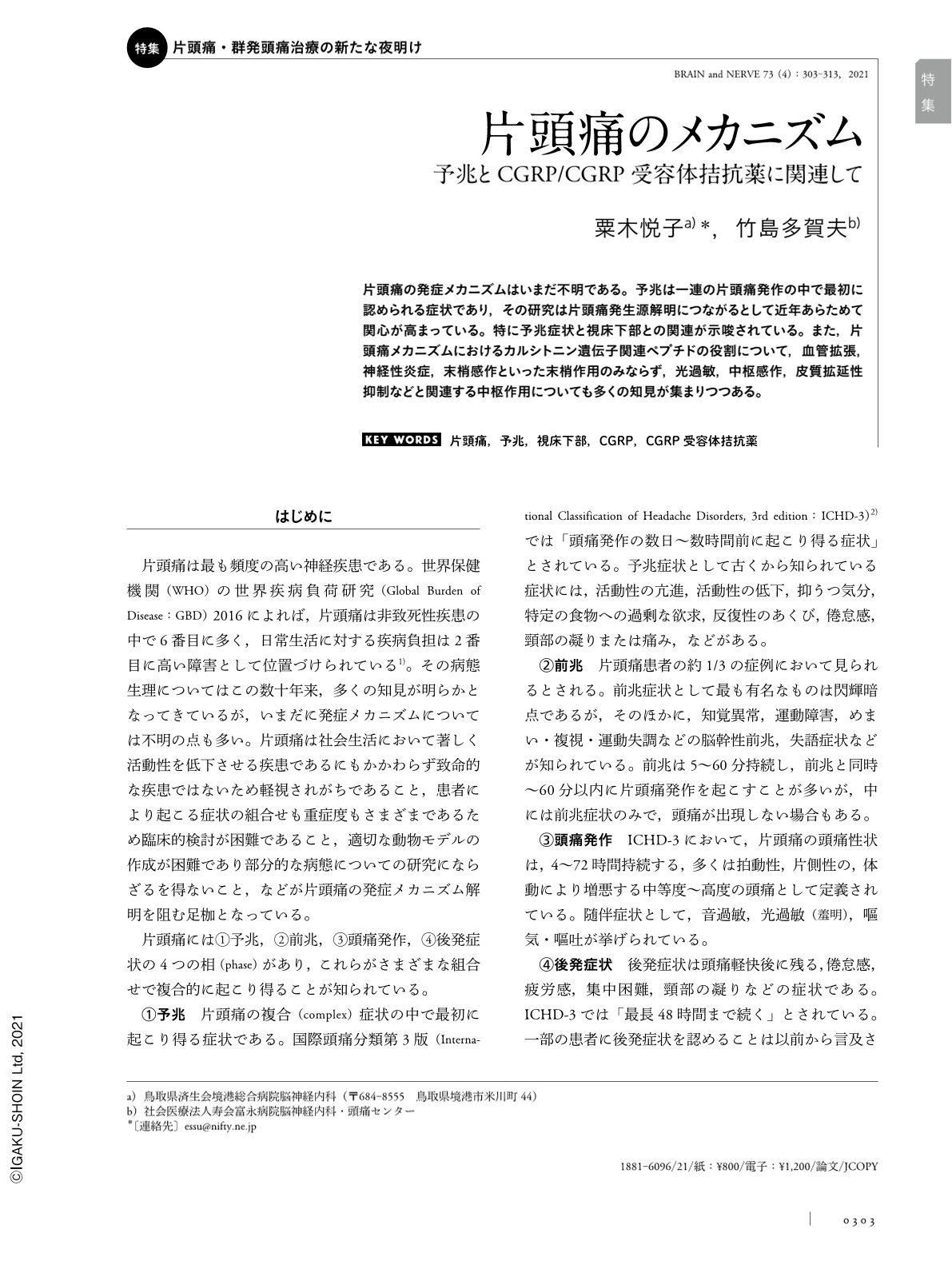Japanese
English
- 有料閲覧
- Abstract 文献概要
- 1ページ目 Look Inside
- 参考文献 Reference
片頭痛の発症メカニズムはいまだ不明である。予兆は一連の片頭痛発作の中で最初に認められる症状であり,その研究は片頭痛発生源解明につながるとして近年あらためて関心が高まっている。特に予兆症状と視床下部との関連が示唆されている。また,片頭痛メカニズムにおけるカルシトニン遺伝子関連ペプチドの役割について,血管拡張,神経性炎症,末梢感作といった末梢作用のみならず,光過敏,中枢感作,皮質拡延性抑制などと関連する中枢作用についても多くの知見が集まりつつある。
Abstract
Migraine is the sixth most common cause of disability worldwide. Historically, three theories regarding the etiology of headache have been suggested: vascular, neuronal, and trigeminovascular. However, the mechanism of migraine is still unknown. The advantages of studying the premonitory phase are several as it is the earliest clinical change during a migraine attack, and hence, is likely to disclose brain areas involved right at the beginning. Studying this phase may also allow to reveal the generator of migraine. In human neurophysiology, human functional neuroimaging, and preclinical biochemical studies, the relationship between the premonitory phase and hypothalamus has been suggested. On the other hand, calcitonin gene-related peptide (CGRP) has now been firmly established as a key player in migraine. Trigeminal CGRP and its roles in vasodilation, neurogenic inflammation, and peripheral sensitization are likely to be the most relevant peripheral actions causing the condition. CGRP could also be acting as a neuromodulator of light aversion, central sensitization, and cortical spreading depression (CSD).

Copyright © 2021, Igaku-Shoin Ltd. All rights reserved.


